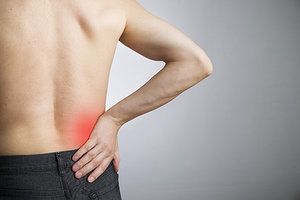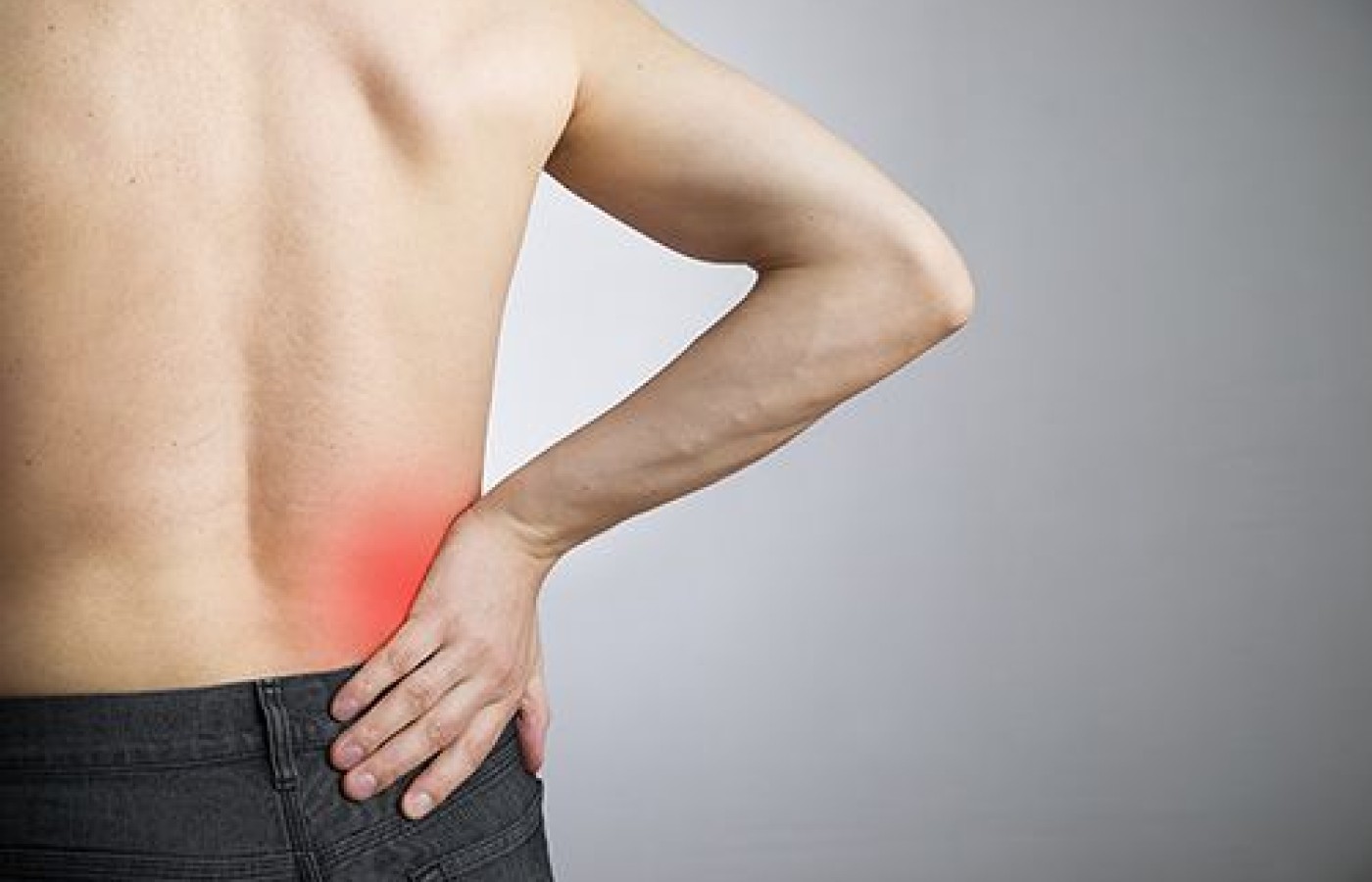Whether you accept it, avoid it or live somewhere in between, insurance coverage has become a defining issue for our profession. Patients increasingly expect to use their benefits, practitioners want to be compensated fairly for their time and expertise, and the system itself remains – at best – fragmented. The encouraging news is that coverage has expanded in meaningful ways. The challenging news is that reimbursement, across the board, remains inadequate.
With Low-Back Pain, Sometimes Little Things Matter
Typical treatments for low back pain involve large muscles like the quadratus lumborum, iliopsoas, and piriformis. However, there are situations when a very small muscle, the multifidus, can play a significant role in the diagnosis and treatment of low back muscular or spinal injury.
The importance of this muscle comes from understanding how the body orchestrates movement in regard to the low back and spine. It's a coordinated effort where there's an initial stabilization of the spinal column before large muscles flex, extend, and rotate the body into different positions. This stabilization is critical in keeping vertebra and discs aligned, evenly spaced, and tensioned for effective shock absorption.
The multifidus performs all these functions. It is a highly active muscle used during almost every movement of the back. Its role in rotation is not to produce the actual rotation, but to oppose the flexion effect of abdominal and other back muscles as they produce rotation. This allows the spine to remain vertical, rather than flexing, when pure rotation is desired.

The multifidus muscles are part of the transversospinal muscle group located in between the semispinalis and rotatores, and deep to the erector spinae. The muscle fibers (fasciculi) originate at the base of the vertebral spinous processes and travel diagonally downward two to four segments from their origin, depending on their spinal location. They insert at the mammillary processes of the lumbar vertebra, the transverse processes of the thoracic vertebra, and the articular processes of the cervical vertebra.
In the lumbar area, the multifidus differs from the erector spinae in that its fibers are thicker, more vertically oriented, and significantly more powerful. They are the only muscle fibers posterior to the lumbosacral transitional point (L5-S1). Therefore, the multifidus must produce enough tension to ensure that L5 does not slide forward on the sacral plateau (spondylolisthesis), even though this surface may naturally and significantly slope downward.
Vulnerability
Researchers have discovered that the multifidus muscle has only one level of nerves coming from the spine, making it more susceptible to injury. Also, the muscle is highly prone to developing trigger points. These points lay along either side of the spine and sacrum within the paravertebral canals. Pain and tenderness can be local, refer to adjacent vertebrae or even into the lateral abdominal region. Trigger points can develop from auto collisions, facet syndrome, lumbar lordosis, thoracic kyphosis or scoliosis. Also, they can develop or reactivate from trigger point activity in larger muscle groups that move the spine such as the quadratus lumborum or abdominal obliques.
Effect on Healing
Unaddressed multifidus trigger points are the primary reason that chiropractic and osteopathic spinal manipulations have such short-term success in treating spine pain conditions. Within twenty minutes after a spinal manipulation, tense multifidi restore articular dysfunction in the facet joints that they created in the first place. Releasing the multifidi trigger points will release the associated articular dysfunctions and provide longer lasting relief than spinal manipulation alone.
Based on a 10-week follow-up assessment, even when functional levels of activity returned to normal, multifidus muscle size did not. This may be one factor that contributes to the high recurrence rate of low back pain after an acute episode. A high proportion of patients may have a deficit in their lumbar muscular stabilizing capacity despite their lack of pain.
Signs of Dysfunction
Persistent lumbar multifidus dysfunction is identified by atrophic replacement of the multifidus with fat which can be visualized utilizing magnetic resonance imaging. Clients with active multifidus trigger points can present with any or all of the following symptoms or clinical findings:
- Deep, persistent ache on the spine that is usually on one side only but will become bilateral over time. Pain doesn't feel muscular in nature, rather it feels like "bone pain."
- Spinous processes of the vertebrae become tender to the touch.
- Occasionally, pain may extend into the lateral abdomen.
- Noticeable stiffness develops in the spine.
- Changing positions doesn't help to ameliorate pain.
- The muscles along one side of the spine may bulge out slightly.
- Articular dysfunctions (facet syndrome) in the lumbar spine that don't respond to chiropractic or osteopathic manipulation.
Tests of Functionality
While on all fours, have the patient lift his/her diagonal hand and knee one inch off the ground. Attempt to hold the position for fifteen seconds. A test fail indicates weak multifidi. While standing, have the patient rotate his/her torso ninety degrees. Observe the spine from behind. Does his/her lumbar remain stationary or flex? Flexion may indicate weak multifidi. While lying prone, have the patient lift his/her head/arms and lower legs (superman position). This will tighten and raise the multifidi. Observe their structure. Look for bulges and/or tender areas along either side of the spine.
Exercises
Preliminary studies suggest that exercise can decrease muscle atrophy and boost functional improvement.
- While lying supine, have the patient hike his/her hips upward one-half inch toward the head, one side at a time. Hold each contraction for a few seconds. Repeat multiple times.
- While on all fours, lift the diagonal hand and knee one inch off the ground – hold for fifteen seconds. Perform for both sides.
- While lying prone, have the patient lift his/her head/arms and lower legs (superman position).
- Exercise with a stationary bike, glider, or ski machine that incorporates the arms and mandates upper body rotations.
Acupuncture
The Huatuojiaji (HTJJ) points are located just lateral to the spine at the lower borders of each vertebral spinous process. Distances vary depending on which text and doctor you follow. Generally, the points are 0.3 to 0.8 cun lateral to the processes, in between the Du and inner UB channels of the back. Originally, there were seventeen point pairs, discovered by the famous doctor Hua Tuo. They range from the first thoracic through the fifth lumbar vertebrae. Later, seven pairs were added for the cervical and sacral areas. These were simply called jiaji (lining spine) points because they had no association with Hua Tuo.
The HTJJ points are located superficially to the multifidi. If the muscle fibers are well formed, chances are good that you can release their trigger points with acupuncture. Focus on needling reactive or achy point locations. Depth is important. The multifidi lay deep to the erector spinae. One has to needle beyond the spinae to correctly stimulate them. Depth varies with patient size. Generally, 0.5 to 1 cun is satisfactory in the thoracic area, and 1 to 1.5 cun in the lumbar area. The correct lumbar depth, for a larger person, may be deeper than 1.5 cun. Some sources suggest vertical insertion, others, oblique toward the spine. Needling 0.5 cun lateral to the spine allows good depth while staying safely away from internal organs. If the multifidi have degraded to mostly fat, they won't respond well to needling and treating them will be ineffective.
All good treatment begins with good diagnosis. If the patient's problem is spinal in nature, make sure to evaluate and possibly treat the multifidi. If other muscles are involved, check the multifidi, anyway. As mentioned earlier, correcting multifidus problems will likely increase adjustment retention and patient healing.
Do a post treatment evaluation and see what changes have occurred. A diagonal hand/knee lift or a torso rotation can quickly and easily confirm treatment effectiveness. Immediate feedback does wonders for both patient and practitioner confidence. Taking care of the little things can make a big difference.
Resources:
- The Multifidus, Sam Visnic, Neuromuscular Therapist (www.endyourbackpainnow.com) [url=https://www.youtube.com/watch?v=XBDz6YUz7xk]https://www.youtube.com/watch?v=XBDz6YUz7xk[/url].
- GetBodySmart, The Multifidus Muscle www.getbodysmart.com/ap/muscularsystem/back_muscles/multifidus/tutorial.html.
- Multifidus Trigger Points: The Chiropractor's Nemesis, Dr. Laura Perry, January 12, 2013 www.triggerpointtherapist.com/blog/multifidi-trigger-points/multifidus-trigger-pointschiropractors-nemesis/.
- Multifidus: The Multitasker By Judith DeLany, Massage Today, April, 2010, Vol. 10, Issue 04 www.massagetoday.com/mpacms/mt/article.php?id=14189.
- Anatomy and Biomechanics of the Back Muscles in the Lumbar Spine With Reference to Biomechanical Modeling, Lone Hansen, PhD; Mark de Zee, PhD; John Rasmussen, PhD; Thomas B. Andersen, PhD; Christian Wong, PhD; Erik B. Simonsen, PhD www.medscape.com/viewarticle/542466_6.
- Multifidus Muscle, Wikipedia [url=https://en.wikipedia.org/wiki/Multifidus_muscle]https://en.wikipedia.org/wiki/Multifidus_muscle[/url].
- The Kidney Meridian and the Hua Tuo Jiaji Points By John Amaro, LAc, DC, Dipl. Ac.(NCCAOM), Dipl.Med.Ac.(IAMA), Acupuncture Today January, 2012, Vol. 13, Issue 01 acupuncturetoday.com/mpacms/at/article.php?id=32505.
- nHUA TUO by Subhuti Dharmananda, Ph.D., Director, Institute for Traditional Medicine, Portland, Oregon www.itmonline.org/arts/huatuo.htm.
- Multifidus Muscle Recovery Is Not Automatic After Resolution of Acute, First-Episode Low Back Pain [Exercise and Functional Testing] Hides, Julie A. PhD; Richardson, Carolyn A. PhD; Jull, Gwendolen A. MPhty Ovid: Hides: Spine, Volume 21(23).December 1,1996.2763-2769 [url=http://citeseerx.ist.psu.edu/viewdoc/download?doi=10.1.1.469.81&rep=rep1&type=pdf]http://citeseerx.ist.psu.edu/viewdoc/download?doi=10.1.1.469.81&rep=rep1&type=pdf[/url].
- "Long-Term Lumbar Multifidus Muscle Atrophy Changes Documented With Magnetic Resonance Imaging: A Case Series". Woodham, Mark; Woodham, Andrew W; Skeate, Joseph W; Freeman, Michael D (2014-01-01). Journal of Radiology Case Reports 8 (5).doi:10.3941/jrcr.v8i5.1401. PMC 4242062. PMID 25426227.



